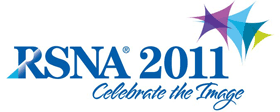
Abstract Archives of the RSNA, 2011
SSK14-01
Quality Improvement Registry in CT Scans in Children (QuIRCC): Age-specific Effective Dose Analysis for Abdominal CT in the United States Compared to Other Countries—How Are We Doing?
Scientific Formal (Paper) Presentations
Presented on November 30, 2011
Presented as part of SSK14: Pediatrics (Radiation Dose Reduction)
Marilyn J. Goske MD, Presenter: Nothing to Disclose
Laura P Coombs PhD, Abstract Co-Author: Nothing to Disclose
Keith J. Strauss MS, Abstract Co-Author: Nothing to Disclose
Michael James Callahan MD, Abstract Co-Author: Nothing to Disclose
Kassa Darge MD, PhD, Abstract Co-Author: Nothing to Disclose
Donald P. Frush MD, Abstract Co-Author: Nothing to Disclose
David Larson MD, Abstract Co-Author: Nothing to Disclose
Daniel Jay Podberesky MD, Abstract Co-Author: Author, Amirsys, Inc
Research support, Toshiba Corporation
Speakers Bureau, Toshiba Corporation
Alex Towbin MD, Abstract Co-Author: Nothing to Disclose
Jeffrey Scott Prince MD, Abstract Co-Author: Nothing to Disclose
Sjirk Jan Westra MD, Abstract Co-Author: Nothing to Disclose
Keith Mandel MD, Abstract Co-Author: Nothing to Disclose
Diagnostic reference levels (DRLs) for pediatric CT are a new concept in the U.S. DRLs guide practice and monitor estimates of patient dose. Effective dose (E) is a dose metric that is used in risk assessment. We report the first pediatric DRLs (ED and DLP) in abdominal CT based on a national registry and compare this to reports from other countries.
6 children’s hospitals participated in a 3 month retrospective review of abdominal CT scans performed on patients <18 yrs. We recorded: patient demographics, scanner and technique, FOV, CTDIvol and DLP. From DLP and knowledge of phantom size, E was calculated using published k coefficients. DLP was based on the 16 cm phantom for all but the >15 yr ( 32 cm phantom ). E and DLP were compared to published DRL.
992 patient exams (532 males) entered into a registry in the American College of Radiology’s National Radiology Data Registry, consisted of newborn n=19, 1 yr n= 89, 5 yr n=207, 10 yr n= 417 and > 15 yr n=260. Mean DLPs (mGy cm)(range) in the newborn were 203 ( 50-866), 1 yr 254 (102-1388), 5 yr 328 (60-1318), 10 yr 646 (100-2717), and > 15 yr 427(88 - 1400). E (mSv)(range) were newborn 10.0(2.5- 42.5), 1 yr 7.6(3.1-41.6), 5 yr 6.6 (1.2-26.4), 10 yr 9.7 (1.5 - 40.8), >15 yr 6.4 ( 1.3-21). The QuIRCC DRLs (3rd quartile) for DLP is lower than published international reference levels for 3 published age groups(UK). Compared to a comparable non-US study, QuIRCC mean DLP was significantly lower for 1 and 5 yr old age groups (p<.05) ; significantly higher for 10 yr (p<.05) and not significantly different for teens. When compared to published reports, E was lower in patients in the 0,1 and 5 yr olds and higher in the 10 yr and teen group.
There are few comparable published reports using E for pediatric abdominal CT. Data from the first prototype US national registry demonstrates a variable relationship for E when compared to other published reports, but lower dose across all ages when DRLs using DLP is compared.
There are few current published US standards for pediatric CT using DLP and E. This report is a first step in improving understanding of target dose levels in the US.
Goske, M,
Coombs, L,
Strauss, K,
Callahan, M,
Darge, K,
Frush, D,
Larson, D,
Podberesky, D,
Towbin, A,
Prince, J,
Westra, S,
Mandel, K,
Quality Improvement Registry in CT Scans in Children (QuIRCC): Age-specific Effective Dose Analysis for Abdominal CT in the United States Compared to Other Countries—How Are We Doing?. Radiological Society of North America 2011 Scientific Assembly and Annual Meeting, November 26 - December 2, 2011 ,Chicago IL.
http://archive.rsna.org/2011/11013810.html

